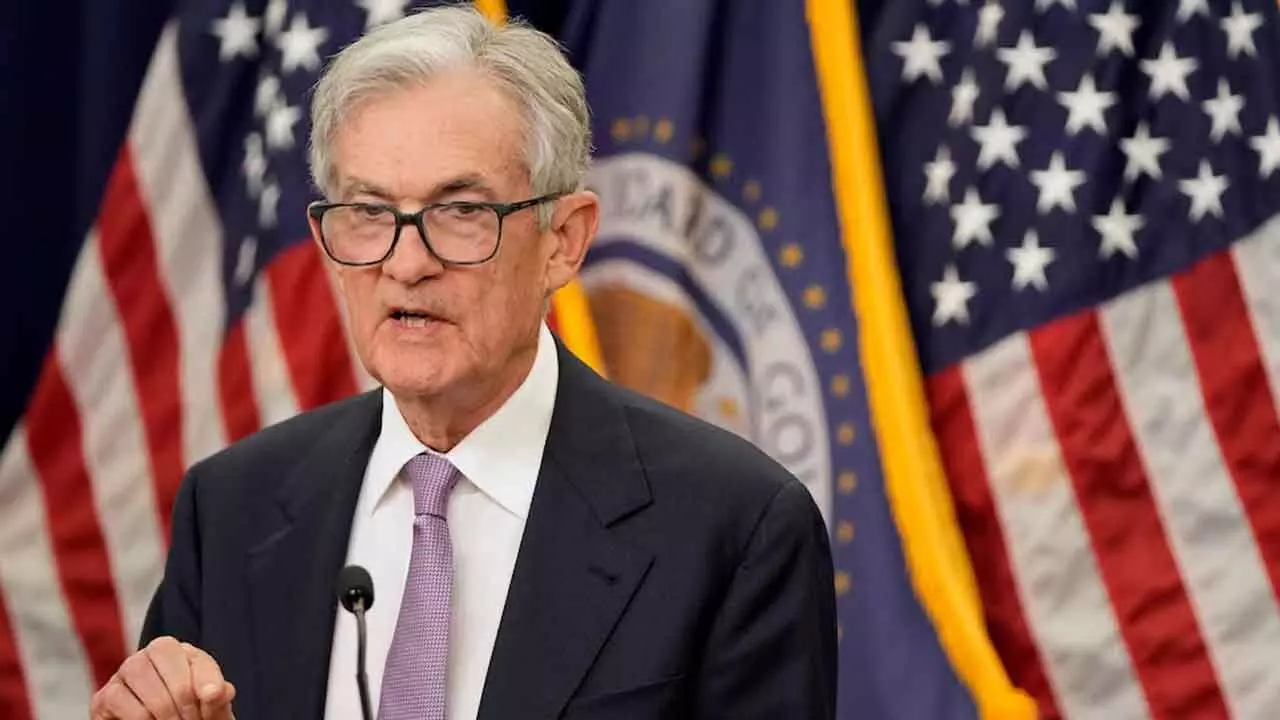Fed Set To Cut Key Rates, But Trump's Policies Raise Risks
Trump's plan to impose 10% tariff on all imports, as well as higher taxes on Chinese goods, and to carry out a mass deportation of undocumented immigrants would almost certainly boost inflation
Fed Set To Cut Key Rates, But Trump's Policies Raise Risks

Washington: Federal Reserve officials are poised to reduce their key interest rate for a second straight time, responding to a steady slowdown of the inflation pressures that exasperated many Americans and contributed to Donald Trump's presidential election victory.
Yet the Fed's future moves are now more uncertain in the aftermath of the election, given that Trump's economic proposals have been widely flagged as potentially inflationary. His election has also raised the specter of meddling by the White House in the Fed's policy decisions, with Trump having proclaimed that as president he should have a voice in the central bank's interest rate decisions.
The Fed has long guarded its status as an independent institution able to make difficult decisions about borrowing rates, free from political interference. Yet during his previous term in the White House, Trump publicly attacked Chair Jerome Powell after the Fed raised rates to fight inflation, and he may do so again. The economy is also clouding the picture by flashing conflicting signals, with growth solid but hiring weakening.
Even so, consumer spending has been healthy, fueling concerns that there is no need for the Fed to reduce borrowing costs and that doing so might overstimulate the economy and even re-accelerate inflation. Financial markets are throwing yet another curve at the Fed: Investors have sharply pushed up Treasury yields since the central bank cut rates in September.
The result has been higher borrowing costs throughout the economy, thereby diminishing the benefit to consumers of the Fed's half-point cut in its benchmark rate, which it announced after its September meeting.
The average US 30-year mortgage rate, for example, fell over the summer as the Fed signaled that it would cut rates, only to rise again once the central bank actually cut its benchmark rate. Broader interest rates have risen because investors are anticipating higher inflation, larger federal budget deficits, and faster economic growth under a President-elect Trump.
In what Wall Street has called the “Trump trade,” stock prices also soared and the value of bitcoin and the dollar surged. Trump had talked up cryptocurrencies during his campaign, and the dollar would likely benefit from higher rates and from the across-the-board increase in tariffs that Trump has proposed.
Trump's plan to impose at least a 10 per cent tariff on all imports, as well as significantly higher taxes on Chinese goods, and to carry out a mass deportation of undocumented immigrants would almost certainly boost inflation. This would make it less likely that the Fed would continue cutting its key rate.
Annual inflation as measured by the central bank's preferred gauge fell to 2.1 per cent in September. Economists at Goldman Sachs estimate that Trump's proposed 10 per cent tariff, as well as his proposed taxes on Chinese imports and autos from Mexico, could send inflation back up to about 2.75 per cent to 3 per cent by mid-2026.
Such an increase would likely upend the future rate cuts the Fed had signaled in September. At that meeting, when the policymakers cut their key rate by an outsize half-point to about 4.9 per cent, the officials said they envisioned two quarter-point rate reductions later in the year — one on Thursday and one in December — and then four additional rate cuts in 2025. But investors now foresee rate cuts next year as increasingly unlikely.
The perceived probability of a rate cut at the Fed's meeting in January of next year fell Wednesday to just 28 per cent, down from 41 per cent on Tuesday and from nearly 70 per cent a month ago, according to futures prices monitored by CME FedWatch.
The jump in borrowing costs for things like mortgages and car loans, even as the Fed is reducing its benchmark rate, has set up a potential challenge for the central bank: Its effort to support the economy by lowering borrowing costs may not bear fruit if investors are acting to boost longer-term borrowing rates.
The economy grew at a solid annual rate of just below 3 per cent over the past six months, while consumer spending — fueled by higher-income shoppers — rose strongly in the July-September quarter. At the same time, companies have reined in hiring, with many people who are out of work struggling to find jobs.
Powell has suggested that the Fed is reducing its key rate in part to bolster the job market. But if economic growth continues at a healthy clip and inflation climbs again, the central bank will come under growing pressure to slow or stop its interest rate cuts.

